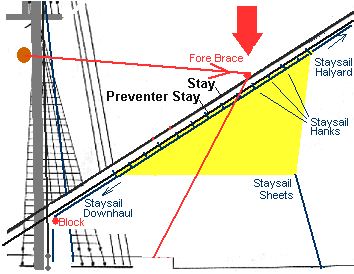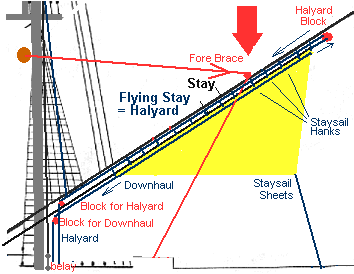Galleries
My Model Ships - In The Making ...
Heller - Le Soleil Royal, 1:100 Scale
|
... yet another in the making ... The Hull
... but before I start rigging the masts, I wanted to rigg the guns and find some solution for the boats ...
THE eye-catcher of all is of course her golden stern :)
I stopped working on the Soleil Royal in autumn 2007. Not because I was preparing my final move to Sweden, but because I found the plan provided somewhat unlikely ... and yet I had not sailed by myself with the Swedish replica "Götheborg", on two occasions in 2009 and 2010, that helped me to solve the riddle eventually. In short: I think the belaying plan that Heller provides it almost totally wrong. Well I would not have known better before my real sailing experiences, and other visits to museums. The original plan is a "number plan", to be read by a table - that does not give the lines names that seamen use, like "topgallant brace". It takes a lot of time to read such a plan, and it is unfortunately prone to make mistakes. So I translated it into a named plan, using the English terms, for this web page:
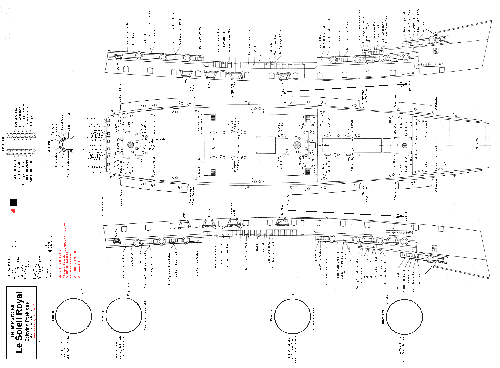
December 2010: using all my experience from real sailings, my books, plans, pictures and studies of the last 10 years, I finally put the puzzle together, without altering any pins or fiferails and knights layouts, but with a completely different result:
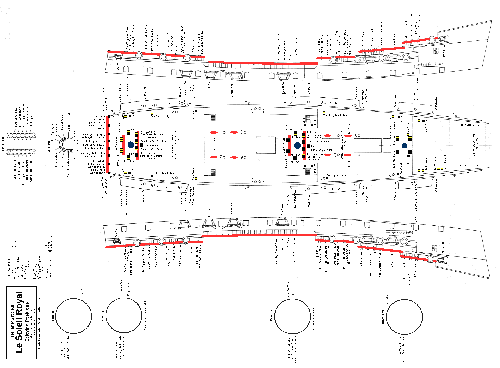
This is how I will rigg my model - yes, it is only my personal reconstruction. If it comes close to the historic original, I simply don´t know. You may have Your own ideas about it. Now I can continue building ... UPDATE 2010-12-11: 
Plan RevisioningAfter almost completing the hull, I had a problem like on all of my models: I stumbled upon the rigging and belaying plan of the kit. Something was wrong with it ... indeed a lot of things. For example, the topail lifts and many other lines were all missing in the plans, but those are vital for a working rigging. So I still halted building for making my own plans ... modellers business as usual ... Here is the (continental) pattern for the Running Rigging that was used on almost every 3-masted ship between 1700 and 1800: 
Auxiliary stunsails came up in this era, too: 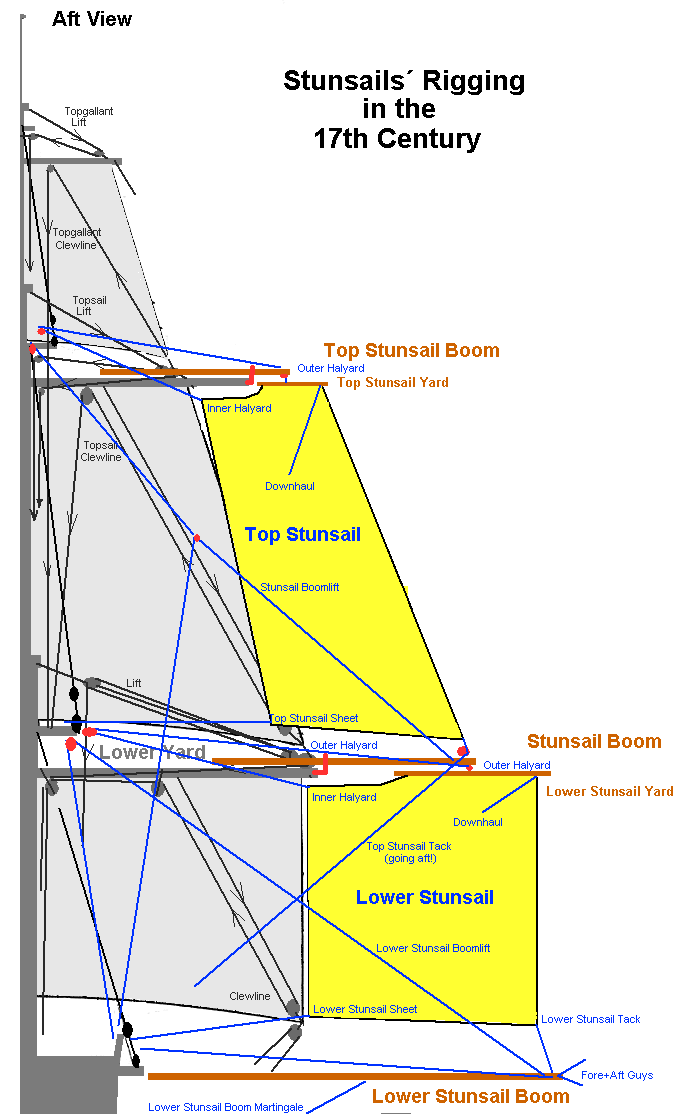
Also beginning in this era, staysail were invented (but rarely used): 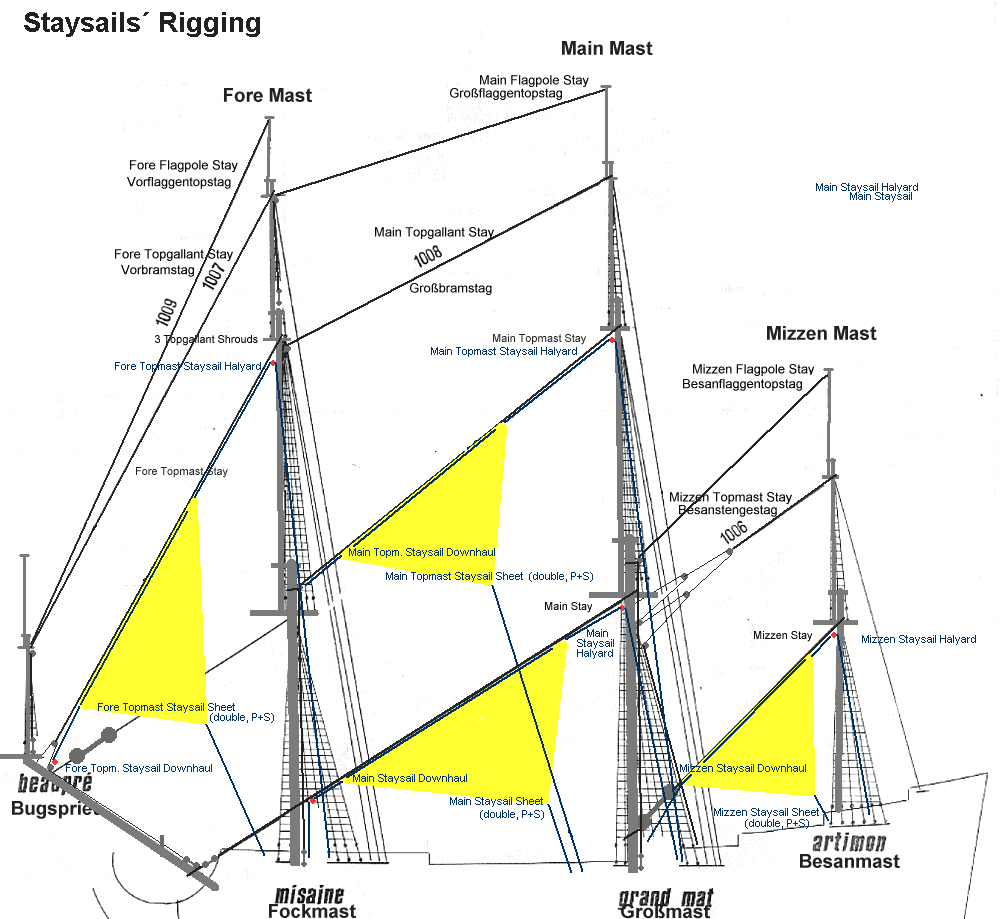
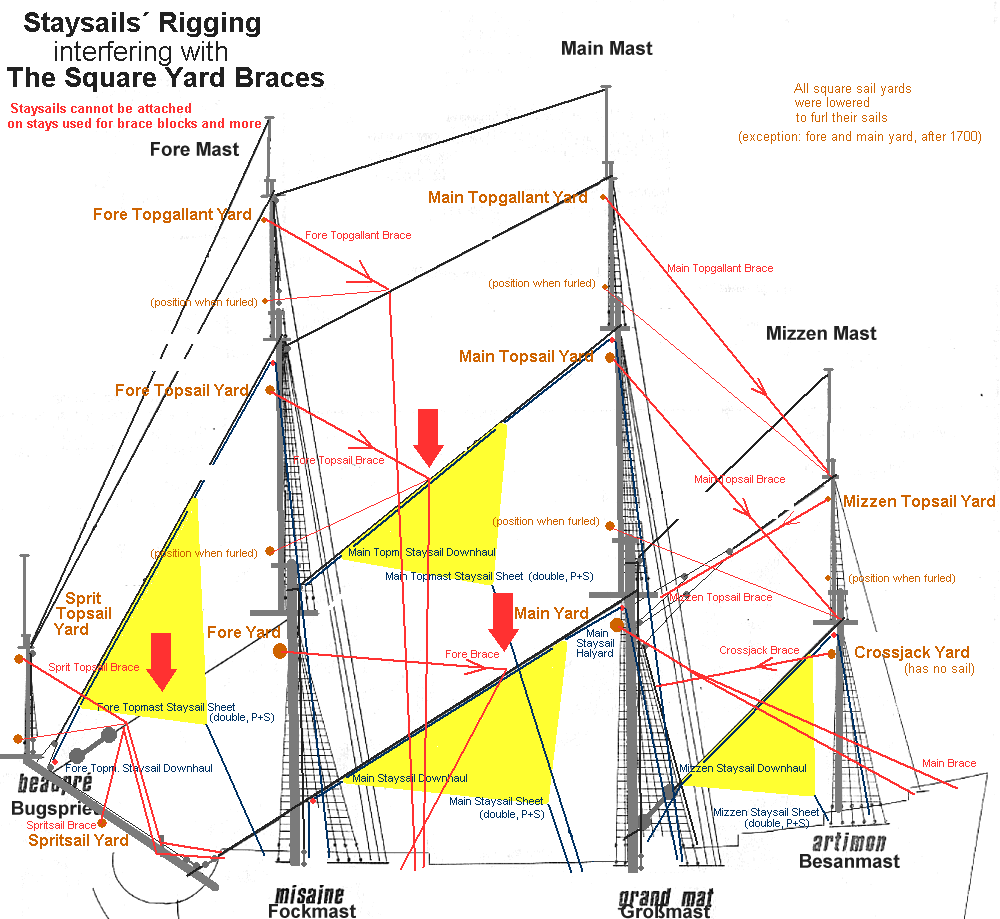
It could be one of the reasons why staysails were reportedly so rarely used on older square riggers. Staysails came more "in fashion" when the rigging had been changed so far that the fore braces no longer lead to the fore castle, but all to the main mast and down there to a pin rail at the main mast instead; that happened around 1850, with the developement of the Clipper Ships... Solution for Old Riggings: so when the stays were obviously not usable for sail attaching, the staysails must have been hanged on something different, but similar. There are only two possible ways:
|
